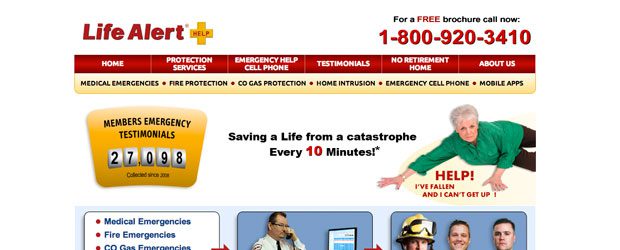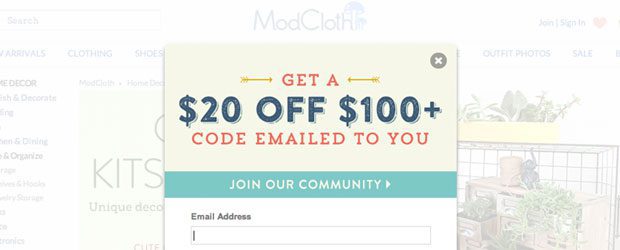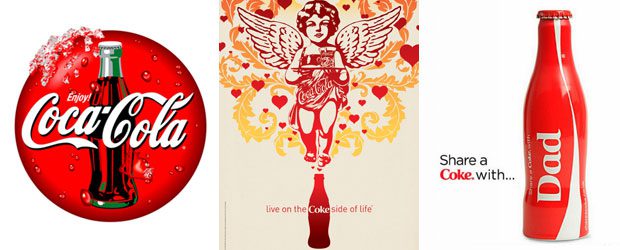Online marketing can go in millions of different directions, but the one marketers seem to stick with the most is direct response marketing.
This type of marketing inspires an immediate response from consumers. You might want more people to sign up for your e-newsletters, attend your webinars or simply buy something from you. With this type of marketing, you can easily judge the success of your efforts based on the level of response.
There are two basic approaches to this type of marketing: the one-shot and the campaign. Both have the ability to deliver good results and drive up your profits, but different companies will find different uses for each approach.
The one-shot is a narrowly targeted ad, email, postcard or letter that urges consumers to act, almost always to buy. Marketers first find a problem that their product or service will solve and then work tirelessly to define the target audience so they can be sure their ad is going to the right people. Once they have a problem and target carved out, marketers create a strong ad to put in front of consumers.
The campaign approach begins like the one-shot, with a strong marketing ad. However, the goal is different. With the campaign, you don’t need to sell products and services right away. Instead, you want people to join your mailing and emailing lists so you can send them frequent updates, newsletters and coupons, which encourages purchasing over a period of time.

So now that you know what direct response marketing is, let’s take a look at seven awesome direct response strategies that will help your profits grow.
Begin With A Story
One of the best ways to put a consumer into the right frame of mind for your product or service is to open with a story or narrative. You’ll often see this in infomercial ads that feature people confronted by a problem who use a product or service to solve a problem.
Life Alert, the medical alert system with the “I’ve fallen and I can’t get up” slogan illustrates this strategy. This ad includes a testimonial from a concerned daughter who wants to be sure that her elderly mother, who lives alone, is safe. The alert system has a button on a lanyard that can be worn around the mother’s neck. If she falls and can’t get to the phone, she presses the button, which calls for an ambulance.

A story gives readers something to connect with. They can relate to the situation and will feel the need to solve the problem similar to the person in the ad. This story reaches out to all sons and daughters with elderly relatives who live alone and offers peace of mind.
Become An Expert In Attention-Interest-Action
John Caples, one of the leading names in the history of advertising, swore by the research-based approach, what he called “scientific advertising.” With this in mind, he developed the Attention-Interest-Action (AIA) plan, the three-step process to creating a knock-out ad. Here’s what it means:
- Attention: Get the audience’s attention and fast!
- Interest: Keep that attention and further pique it.
- Action: Present them with a valid reason to act and tell them how to do it.
Caples always placed great emphasis on the action part and deemed any campaign that failed to deliver actions as a dud, no matter how cool and creative it looked.
Define The Ultimate Appeal
When someone is purchasing a product or service, what is the one thing about the product or service that is the most appealing? Maybe a woman buys a designer skirt to appear more professional to her peers. A student might buy a laptop that suits all of his gaming needs.

Your goal is to determine the most appealing aspect of your product and push that into the faces of your potential consumers. A good marketer will appeal to the human emotions that are timeless and shared by nearly all consumers. Try some of these:
- Make more/save money
- Prestige
- Better health
- Bring comfort (both physical and emotional)
- Reduce fat
- Banish worrying thoughts
There are many more, but these appeals are considered the most common. Luxury car dealers want to appeal to a buyer’s sense of prestige, showing them how their cars will bring drivers prestige. Diet pills and exercise equipment sellers like to show before-and-after pictures of people who have lost weight and body fat by using either a diet pill or exercising on a certain machine.
Message, Not Medium
Have you ever seen a commercial that made you laugh, but you can’t remember what they were actually selling? Or have you ever stared too long admiring an image, but completely forgot to look at what the image was supposed to sell?
These are examples of mediums overtaking the message. Though a funny ad or a striking image can instantly capture a person’s attention, it can also overpower the ad and cause viewers to completely miss the message.
The trick is to harmonize the message with the medium. Keep the Attention aspect of AIA interesting, but not too interesting that your viewers never make it past the medium. Keep the typeface simple and don’t let the colors overtake the ad. Let it all work together to showcase your message.
Offer An Incentive
Companies like Steve Madden and ModCloth use two-step direct response campaign when they offer discounts to consumers just for signing up for emails. Consumers agree to receive updates and are given a small coupon to entice them to buy. Once they see the product and are satisfied with it, they’ll be more apt to buy from the company again.

Software service and other types of services like to offer free-trials to encourage people to sign up. After trying the product, consumers will be better convinced to purchase a subscription or an ongoing service.
If you’re worried about getting people to the site in the first place, remember that you can advertise these incentives online and in print ads. Include your website address so people know where to find you.
Try AdWords
When it comes to direct response, nothing is more direct than Google AdWords. This pay-per-click service allows you to target certain keywords. When someone types in those keywords, banner ads will appear alongside the search results. They’ll even appear on Google’s partnership websites.
You’ll know you’re getting your name into the hands of people who are actively searching for your product or service. You also won’t pay until someone clicks the ad to your site.
There are a few different types of ads to try:
- Offer that incentive mentioned above: “Sign up for get 15% off your first purchase.”
- Make a bold, yet true statement or warning: “Don’t buy this without reading this first.”
- Pose a question: “Thinking about remodelling your kitchen?”
Test Everything in Direct Response Marketing
And when you’re done, test it again.
Think for a minute about Coca Cola’s current ad campaign. Is it the same campaign they ran last year? Five years ago? Absolutely not. Coca Cola knows that its market is constantly changing and the only way to know if you’re reaching them is to test your websites, headlines, ad copies and images again and again.

Take advantage of free programs like Google Analytics and Pingdom to monitor your website and sales progress. Test different markets until you see a definite upturn in your sales.
In short, direct response marketing is something of an art form. With the right components, you can create something memorable that will stick with viewers long after they’re put down the ad or closed their email.












